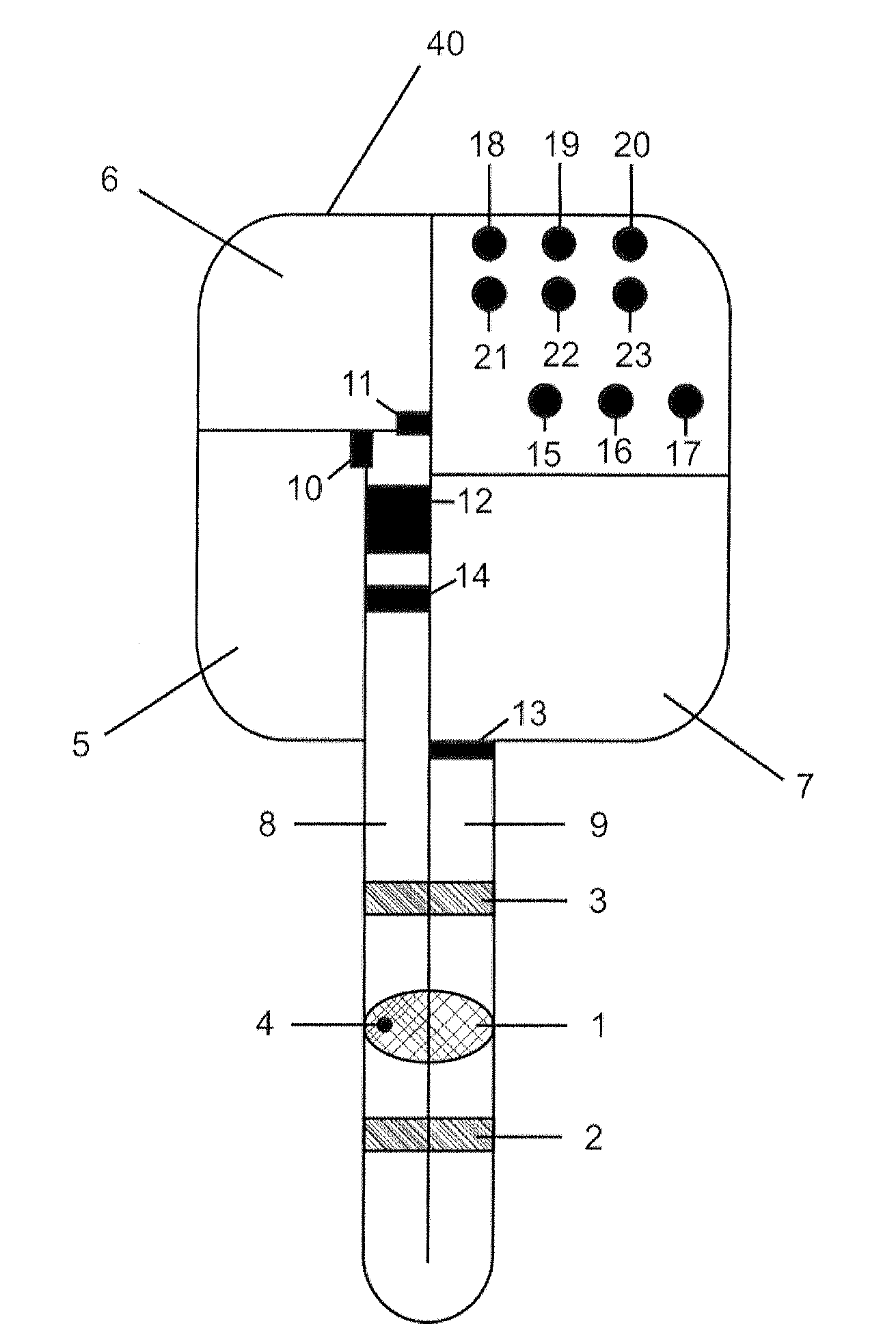Implantable biosensor with automatic calibration
- Summary
- Abstract
- Description
- Claims
- Application Information
AI Technical Summary
Benefits of technology
Problems solved by technology
Method used
Image
Examples
Embodiment Construction
[0019]The present invention uses a disposable needle-sensor (FIG. 1) implantable subcutaneously through its small width part, while the larger width part contains bags, a pump and electric contacts. The sensor in its disposable, needle-like part is of microscopic width and thickness, consisting of an external surface in contact with the body, and of descending and ascending lumens internally to the needle, forming a hydraulic microfluidic circuit, through which pass the fluids for calibrating the sensor. The microfluidic circuit transports fluid down to the level of the working electrode from the input lumen 8 and from there it short-circuits with the output lumen 9 and passes to the drain vessel 7, as is known for microdialysis devices.
[0020]The so-called microfluidic circuit, in a preferred embodiment (FIG. 2A), can consist of two insulating layers 26, 27, impermeable to liquids or gases, of a material such as a plastic sheet, which constitute, with the proper, use such as by mech...
PUM
 Login to View More
Login to View More Abstract
Description
Claims
Application Information
 Login to View More
Login to View More - R&D
- Intellectual Property
- Life Sciences
- Materials
- Tech Scout
- Unparalleled Data Quality
- Higher Quality Content
- 60% Fewer Hallucinations
Browse by: Latest US Patents, China's latest patents, Technical Efficacy Thesaurus, Application Domain, Technology Topic, Popular Technical Reports.
© 2025 PatSnap. All rights reserved.Legal|Privacy policy|Modern Slavery Act Transparency Statement|Sitemap|About US| Contact US: help@patsnap.com



